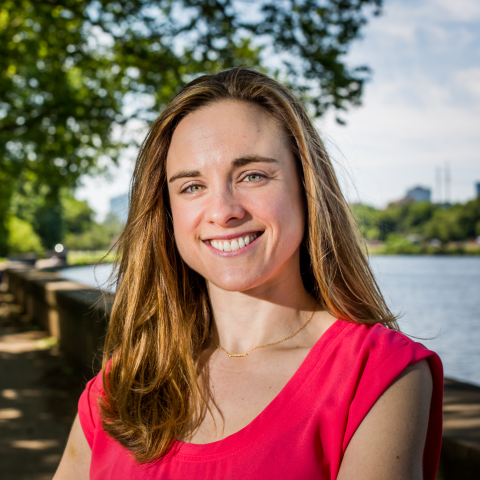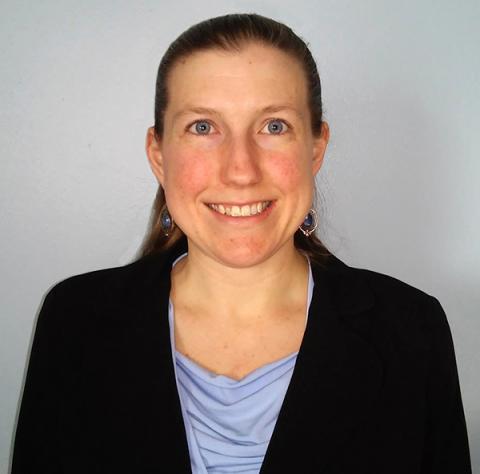Making Antibiotic Resistance Real Through Storytelling
Julia E. Szymczak, a medical sociologist, who spoke at a recent webinar along with Evan Lerner, a science communications expert, shared some of her thoughts and insights on clinician storytelling with Health Care Without Harm.

Interviews with clinicians about antibiotic resistance generate quantitative data, numbers that show patterns and prevalence, which are necessary for making a case for policy change, but medical sociologist Julia E. Szymczak is realizing as she presents her findings to decision makers, qualitative data— in other words stories—have a powerful effect to get people to engage with a topic, discuss it further and convince policymakers to prioritize an issue.
Szymczak is qualitative methodologist whose work involves gathering narrative data through interviews with healthcare workers to understand their perceptions and experiences with various issues. This data is later published in scientific literature. Having conducted hundreds of interviews with physicians, nurses and patients about infections in hospitals, she looks for key themes that show recurrent patterns such as patients pressuring doctors to give them medicines or doctors not realizing the aggregate consequences of each individual prescription.
Many of the clinicians Szymczak speaks to are haunted by the concept of a post-antibiotic era. One otolaryngologist (ear, nose and throat surgeon) Szymczak interviewed recalled the pre-antibiotic history of his profession to help his listeners understand the horror of a post-antibiotic world. He described how the complications from untreated infections, such as ear and sinus infections, would be so severe that surgery was required. In his words, “You need to spook people a bit so they get some perspective and think twice before asking their doctor for antibiotics for every little cold...”
Another example is a story told by Dr. Scott Weissman, a member of the Clinician Champions in Comprehensive Antibiotic Stewardship (CCCAS) Collaborative who testified to Congress about his battle with a nearly untreatable infection that presented in one his patients.
Policy Action Through Storytelling
Held August 9th at 3pm EST / 12pm PST
Health Care Without Harm and the Clinician Champions in Comprehensive Antibiotic Stewardship (CCCAS) Collaborative hosted a webinar to arm clinicians with tools, such as storytelling, to share their firsthand struggle with resistant infections with administrators and public policy makers to motivate action towards antibiotic stewardship.
In 2006, I was asked to consult on a patient who had been born with a condition called bladder exstrophy, where her bladder was not fully enclosed at birth. She had had dozens of surgeries in her life to provide her with normal functioning and quality of life. She had suffered urinary tract infections more frequently than other children her age, and had received more than her fair share of antibiotics to treat them, but was being referred to me because the bacteria were increasingly difficult to treat. For the next three years, we struggled to get these infections under control, but had only brief periods of symptom-free health before infection would return, showing up as stomach pain, flank pain, headache.
We tried antibiotics by mouth, antibiotics by IV, antibiotics into the muscle, even antibiotics directly into the bladder. We tried antibiotics one at a time and in combination. We tried probiotics, cranberry juice, and a full array of alternative therapies that I learned about as we went.
This patient taught me much of what I know about managing infections [in] complicated patients. But being a specialist at an academic referral center, I didn’t fully appreciate how this kind of antibiotic resistance was changing medicine even for the community pediatrician…
A study Szymczak completed last year, published in the Journal of the American Medical Association Pediatrics, asked the question “Why do doctors come to work when they are sick?” Her team surveyed healthcare workers, gathering stories about the experiences they’ve had working sick, reactions from colleagues they’ve gotten when they tried to call out sick, and other obstacles to taking sick leave. The resultant data was presented at her resident hospital, the Children’s Hospital of Philadelphia, at a number leadership meetings in several departments.
“We could have just presented the survey data, which frankly is very dry, but we also presented the narrative data, the story data, and you could see in the faces of the leaders that their level of concern for this problem was just shooting up and that they were emphasizing with physicians and the way they think about this problem and how to manage it, ” says Szymczak. “I think that [stories] cause people to reflect a little more clearly on their lives than if you’re just giving them statistics,” she says.
Leaders at the hospital started to dedicate resources to address the problem. They designed policies that made it easier for physicians to call out sick. Szymczak was amazed by how the stories resonated. “When I stopped to talk to people in the hospital, the stories were on people’s mind. They caused people to say ‘gee, this is a real issue’ as opposed to numbers which don’t have the same emotional appeal. People can see themselves better in stories.”
 April Galarza is the communications coordinator of Health Care Without Harm's Healthy Food in Health Care program.
April Galarza is the communications coordinator of Health Care Without Harm's Healthy Food in Health Care program.
